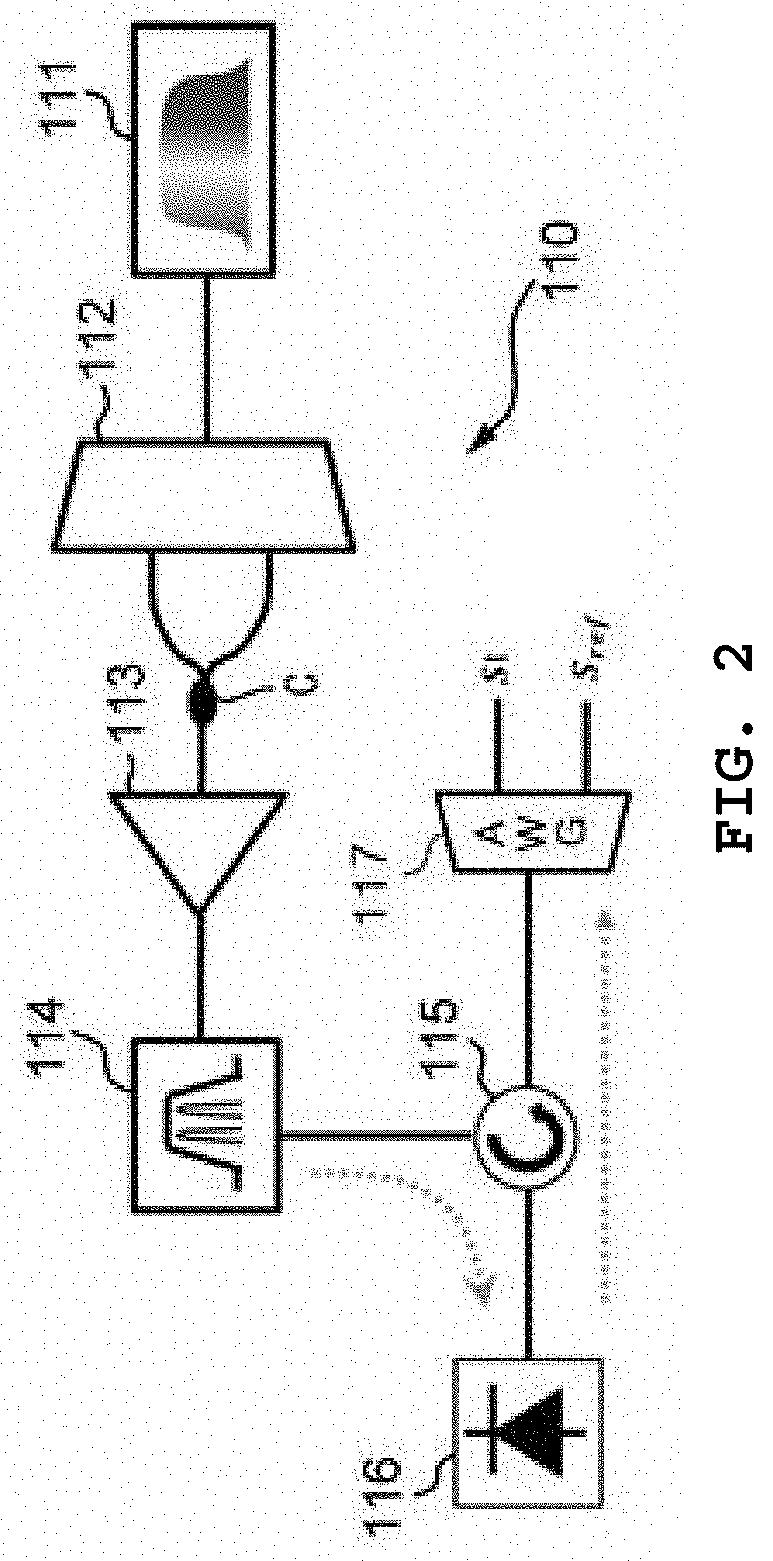Lidar using negative correlation
- Summary
- Abstract
- Description
- Claims
- Application Information
AI Technical Summary
Benefits of technology
Problems solved by technology
Method used
Image
Examples
embodiment 1
[0030]First, preferred Embodiment 1 of the present invention will be described with reference to FIGS. 1 to 6. FIG. 1 is a diagram illustrating a configuration of a LIDAR according to preferred Embodiment 1 of the present invention, FIG. 2 is a diagram illustrating a configuration of a correlation signal generation unit illustrated in FIG. 1, FIG. 3 is graphs illustrating characteristics of outputs from the correlation signal generation unit, FIG. 4 is a diagram illustrating an example for implementing a delay time adjustment unit illustrated in FIG. 1 as an electronic device, FIG. 5 is graphs illustrating a principle of implementing the delay time decision unit illustrated in FIG. 1, and FIG. 6 is a graph illustrating results of correlation restoration by the LIDAR of Embodiment 1.
[0031]As illustrated in FIG. 1, a LIDAR 100 according to preferred Embodiment 1 of the present invention includes a correlation signal generation unit 110 which generates a negative correlation (i.e., inv...
embodiment 2
[0078]Next, preferred Embodiment 2 of the present invention will be described with reference to FIG. 7.
[0079]A LIDAR 200 according to preferred Embodiment 2 of the present invention employs a detection method for improving the reception sensitivity of the LIDAR using a so-called coherent detection method. As described above, the coherent detection method is already known in the art.
[0080]Embodiment 2 of the present invention proposes a LIDAR capable of analyzing a change in the polarization of a received signal while improving the reception sensitivity using such a conventional coherent detection method, and capable of quickly detecting the cross-correlation.
[0081]FIG. 7 is a diagram illustrating a configuration of the LIDAR according to preferred Embodiment 2 of the present invention. As illustrated in FIG. 7, the LIDAR 200 of Embodiment 2 includes a correlation signal generation unit 210, a local oscillator LO, an optical circulator 220, a signal transmission / reception unit 230, t...
modified embodiment
[0100]While the present invention has been described with reference to preferred Embodiments 1 and 2, the present invention is not limited to the above-described embodiments, and various alterations or modifications may be possible without departing from the scope of the present invention.
[0101]In the above Embodiments 1 and 2, the configuration, in which the reference signal Sref of an optical signal is converted into an electric signal by the delay time adjustment unit 150 or the delay time adjustment unit 250, and the converted electric signal is delayed by an appropriate delay time, then the delayed electric signal is combined with the received signal Sr converted into an electric signal by the photodetector 160 or the four photodetectors 260a, 260b, 260c and 260d, has been described, but it is not limited thereto. First, it may be configured in such a way that the reference signal Sref of an optical signal is delayed for an appropriate delay time, and then combined with the rec...
PUM
 Login to View More
Login to View More Abstract
Description
Claims
Application Information
 Login to View More
Login to View More - R&D
- Intellectual Property
- Life Sciences
- Materials
- Tech Scout
- Unparalleled Data Quality
- Higher Quality Content
- 60% Fewer Hallucinations
Browse by: Latest US Patents, China's latest patents, Technical Efficacy Thesaurus, Application Domain, Technology Topic, Popular Technical Reports.
© 2025 PatSnap. All rights reserved.Legal|Privacy policy|Modern Slavery Act Transparency Statement|Sitemap|About US| Contact US: help@patsnap.com



